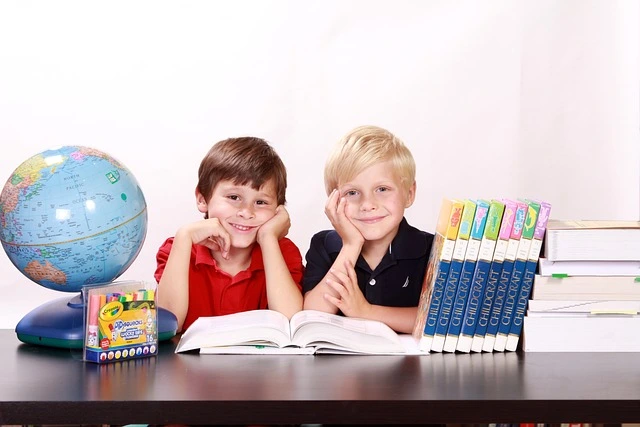Introduction:
Riddles are an incredible method for exciting a youngster’s mind and helping grow their imagination, critical thinking abilities, and clear thinking. Creating your riddles can be nonsense and making up for experience, whether you’re a parent, teacher, or anyone with any interest at all in engaging and teaching children. Here is a bit-by-bit guide on the most proficient method how to make up a riddle for kids

1. Understand the Nuts and bolts of a Riddle
Before making a riddle, it’s basic to understand what makes a riddle novel. A riddle is a question (or investigation), expression, or legal announcement meant to confuse the carefully read audience. It usually includes sharp clever humor, representations, and at times rhymes, giving hints that lead to the response.
2. Understand Your Listeners’ Perspective
While making riddle for kids, taking into account their age and mental level is extremely important. More young children will see the value in easier riddles with clear language, while more seasoned children could appreciate more complicated and energetic (problems, delays, etc.). Continuously intend to coordinate the trouble of the difficult riddle with the child’s understanding to keep them drawn in and pushed.
3. Choose a Theme
Choosing a subject can give a supportive structure to your riddle. Subjects can be founded on creatures, nature, fantasies, regular articles, or any point that intrigues kids. A very much-picked topic makes the riddle more engaging and energizing for the youngster.

4. Start with the Answer
A practical approach to creating a riddle is to start with the answer. Settle on the article, creature, or idea you believe that the kid should figure out. When you have the response, you can work in reverse to foster the signs. This strategy guarantees that your question is kept on track and intelligent.
5. Brainstorm Clues
Think of multiple characteristics or facts about the answer. These clues can describe its appearance, behavior, or other distinctive traits. Try to come up with clues that are both informative and tricky, encouraging the child to think deeply.
6. Use Wordplay and Creativity
Riddles frequently depend on wit to make a tomfoolery and testing experience. Quips, homophones, and representations are brilliant apparatuses for this reason. For instance, on the off chance that your response is “pencil,” you could utilize a sign like, “I have a point however no sharp edge.” This sort of wit adds a component of shock and pleasure when the response is uncovered.
7. Keep It Quick and painless
Youngsters certainly stand out ranges, so it’s vital to keep your questions succinct. Hold back nothing three sentences, guaranteeing each word counts and adds to the general riddle. Brevity helps maintain the child’s interest and makes the riddle easier to remember.
8. Test Your Riddle
Before introducing your riddle to kids, test it out on companions, family, or partners. Getting input can assist you with refining the signs and guarantee that the enigma is both testing and reasonable. Focus on any disarray or confusion, and change your conundrum in like manner.

9. Empower Interest
While offering riddle to kids, urge them to get clarification on some pressing issues and verbally process them. This intelligent methodology makes the experience captivating and instructive. Offer clues assuming that they battle, however, give them sufficient opportunity to contemplate and think of the response all alone.
10. Practice and Have Fun
Like any expertise, riddle-making improves with training. The more you make and offer riddles, the better you’ll become at creating drawing-in and provocative riddles. Above all, play around with the cycle! Your energy will be infectious and motivate the children to appreciate puzzles too.
Model Riddles for Youngsters
To get you started, here are a few examples riddles that demonstrate the principles outlined above:
Riddle 1:
I fly without wings. I cry without eyes. Whenever I go, darkness flies. What am I? Answer: A cloud.
Riddle 2:
I have keys but no locks. I have space but no room. You can enter, but you can’t go outside. What am I? Answer: A keyboard.
Benefits of Riddles for Kids Engaging children with riddles offers numerous benefits:
Upgraded Jargon: Conundrums present new words and ideas, extending a kid’s jargon.
Further developed Cognizance: Addressing questions requires understanding and deciphering hints, supporting appreciation abilities.
Decisive Reasoning: Enigmas urge children to think fundamentally and intelligently, breaking down the pieces of information to track down the response.
Inventiveness and Creative Mind: Making and addressing questions invigorates innovativeness and creative mind, as youngsters think about different conceivable outcomes.
Tomfoolery and Diversion: Questions are a tomfoolery and energetic method for getting the hang of, making instruction pleasant.
Conclusion
Making riddles for youngsters is a magnificent and instructive action that offers endless advantages. By grasping the rudiments, taking into account your crowd, and utilizing imagination and pleasantry, you can create riddles that engage and challenge youthful personalities. Make sure to keep your questions compact, test them for lucidity, and in particular, play around with the cycle. Cheerful enigma-making!



